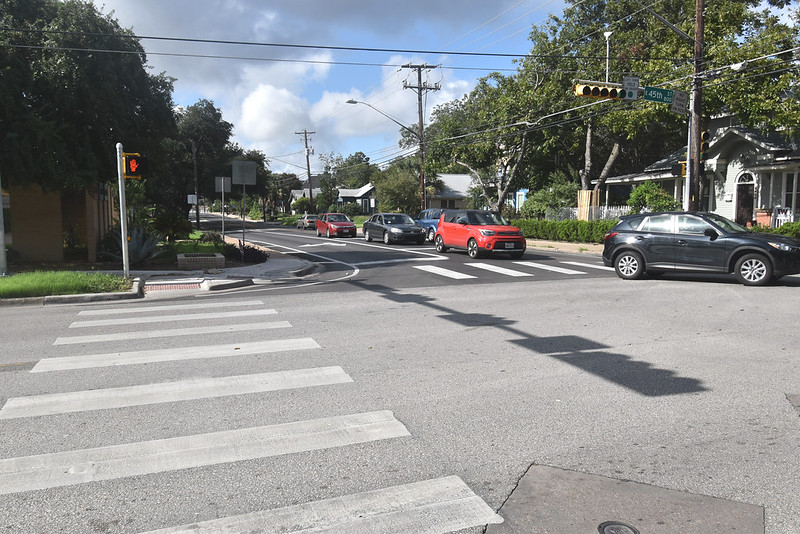Pedestrian crossings address safety and comfort for pedestrians at locations where different modes of travel intersect and where the risk of crashes or conflicts is highest. City data shows that creating pedestrian crossings in convenient locations improves road safety. Crashes that happen farther from signalized crossings such as a traffic signal or pedestrian hybrid beacon are more severe. Crashes occurring over a half mile away from the nearest signalized crossing resulted in serious injury or fatality 43% of the time, compared with only 22% of the time if the crash occurred within one-eighth of a mile of a signal.
You can find more information on pedestrian crossings in the 2023 Sidewalks, Crossings and Shared Streets Plan.
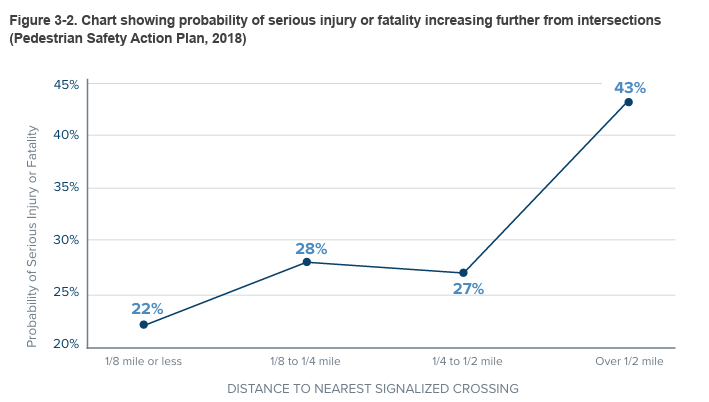
Pedestrian Crossing Treatments
The City’s Crossing Guidelines are used to determine the appropriate crossing treatment for a location based on the number of lanes, whether there is a median island, vehicle speeds and vehicle volumes and provide guidance on options to make crossings safer where there aren't any stop signs or traffic lights. They are based on research from around the country but are adjusted to fit our city. These guidelines suggest ways to make new crossings safer or improve existing ones, depending on how fast cars go, how many there are, and how the road is built. However, the final decision on what can be done requires approval from the City Traffic Engineer.
- High Visibility Crossings
-
High visibility crossings improve a driver’s awareness of a pedestrian crossing through a striping design, which includes continental crosswalk markings. These enhancements are generally appropriate on all streets but higher-speed streets require additional treatments to provide the needed level of safety.
- Crossing Islands
-
Crossing or pedestrian refuge islands provide a protected space for pedestrians to stand and wait in the middle of a two-way street. Crossing islands are generally appropriate on all street levels and should be considered with signalized treatments for level 3 and 4 streets with high travel speeds.
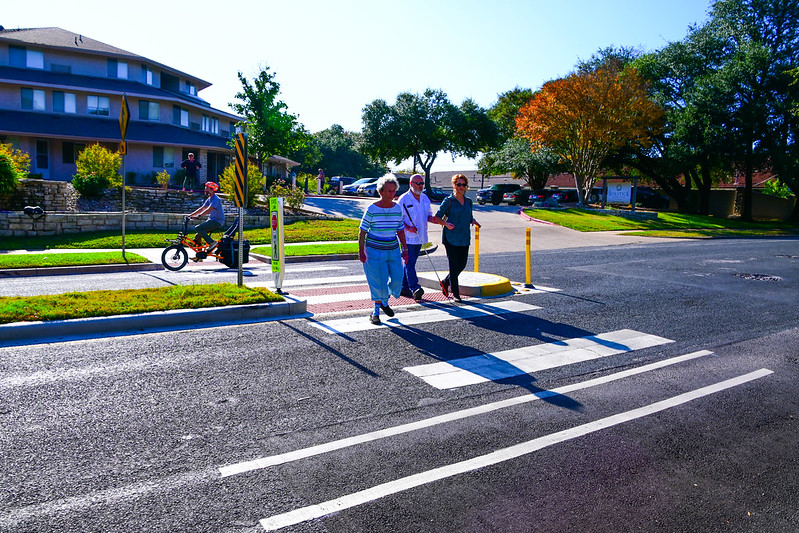
- Curb Extensions
-
Curb extensions or bulb outs, extend the sidewalk into the street to reduce the distance of the crossing, limiting the exposure of crossing pedestrians and enhancing the sight distance between pedestrians and motorists. Curb extensions are good candidates for locations with existing parking lanes and should be used in combination with other countermeasures. Curb extensions are generally appropriate on all street levels within the guidelines of the Transportation Criteria Manual.
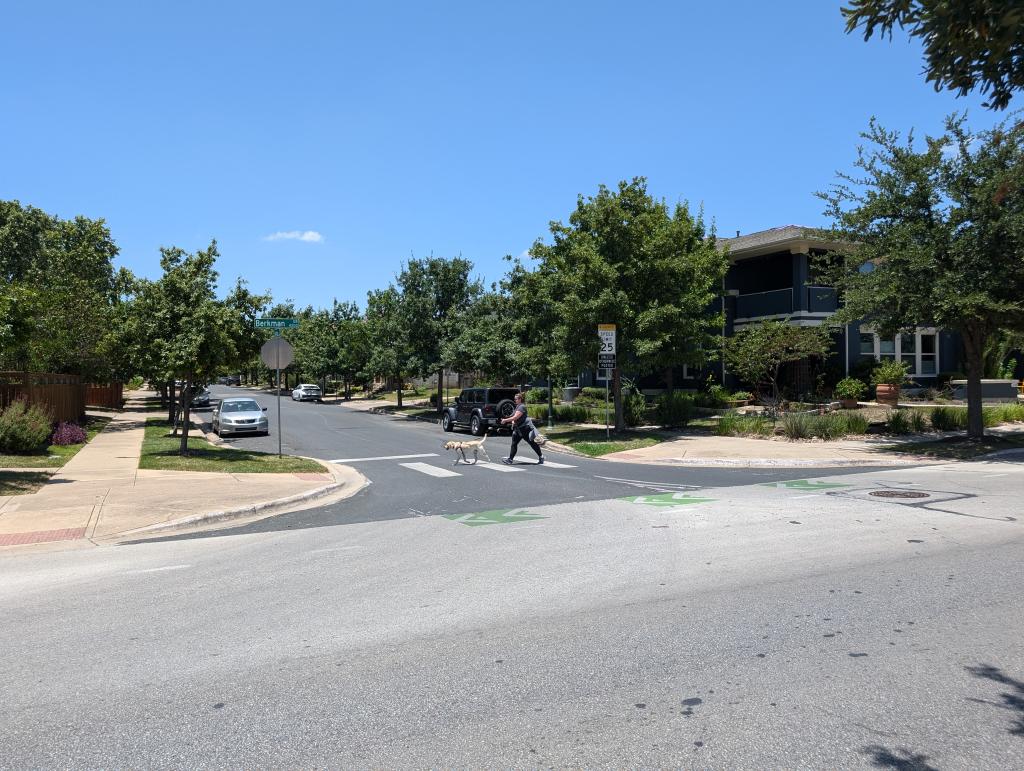
- Raised Crossings
-
Raised crossings are ramped speed tables spanning the entire width of the roadway, often placed at mid-block crossing locations. Raised crossings are particularly useful around schools where children are expected to cross frequently.
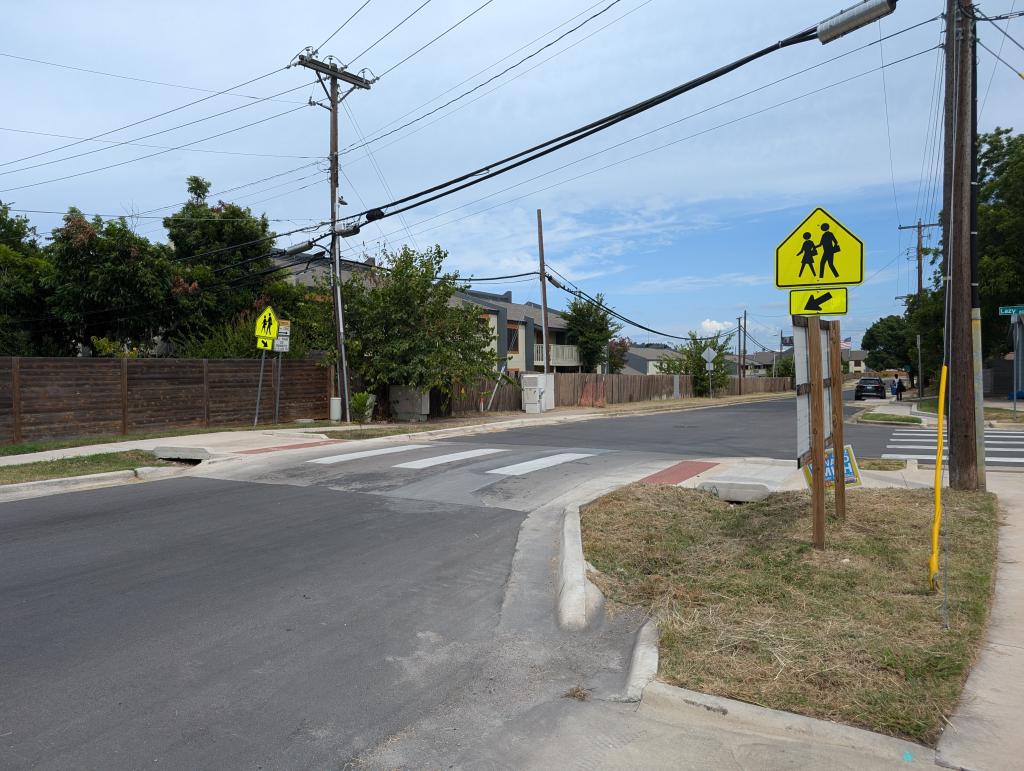
- Grade Separation
-
Grade separation refers to building a pedestrian bridge or tunnel to fully separate people crossing from moving vehicles using a multilane street or a controlled access highway. Grade separation can eliminate the conflicts associated with crossing such facilities.
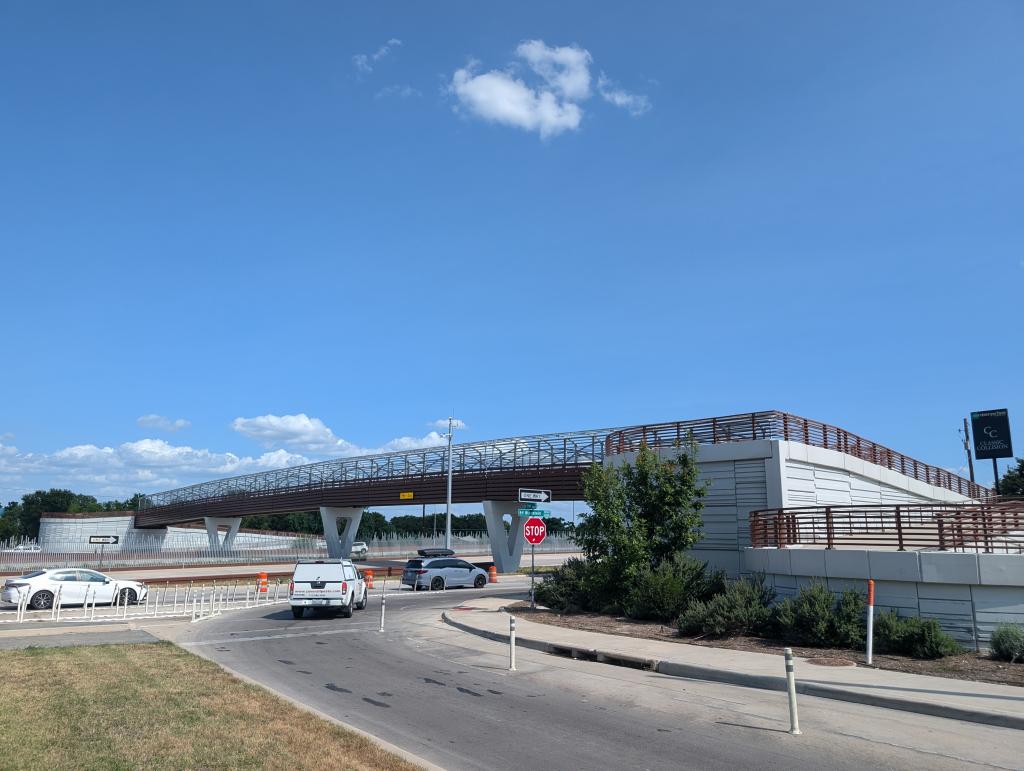
- Rectangular Rapid Flashing Beacons (RRFB)
-
Rectangular rapid flashing beacons (RRFB) are rectangular-shaped yellow light indicators that flash when a pedestrian activates it via pushbutton or pedestrian detection. These are typically used with a crossing warning sign and are placed on both ends of the crossing and potentially on the crossing island (if present). RRFBs are generally appropriate when crossing islands can’t be installed.
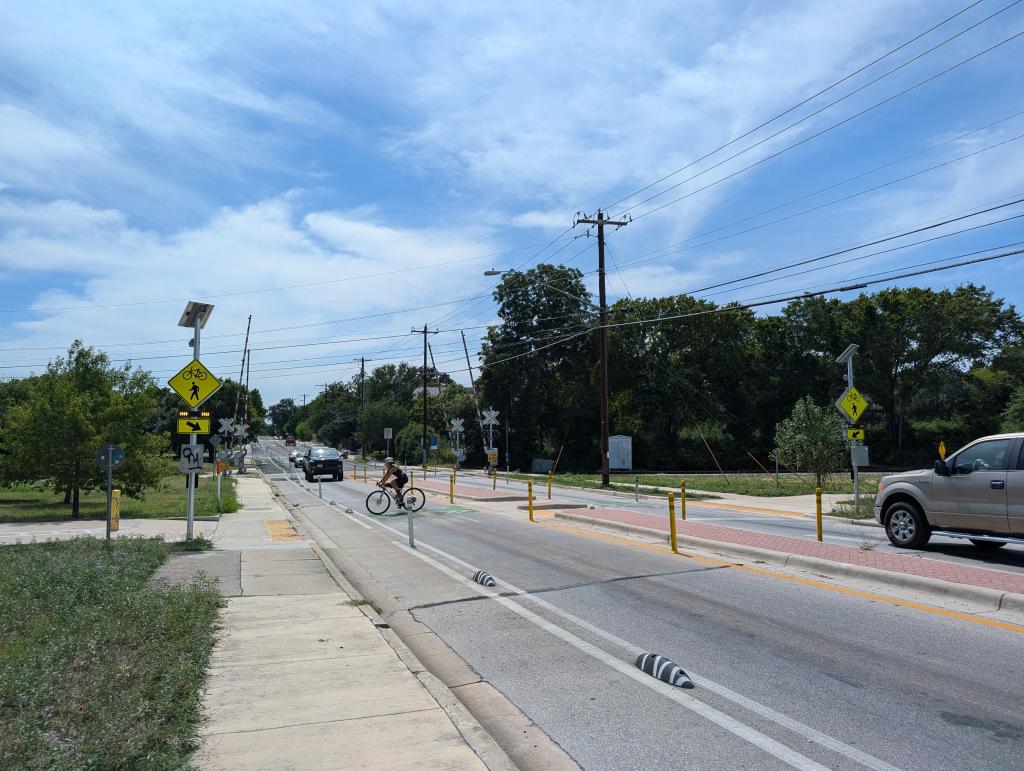
- Pedestrian Hybrid Beacons (PHB)
-
Pedestrian hybrid beacons (PHB) include one yellow and two red lenses on a signal pole to stop traffic when pedestrians are present. PHBs are activated by a pedestrian push button or pedestrian detection. PHBs are generally appropriate on level 3 and 4 streets.
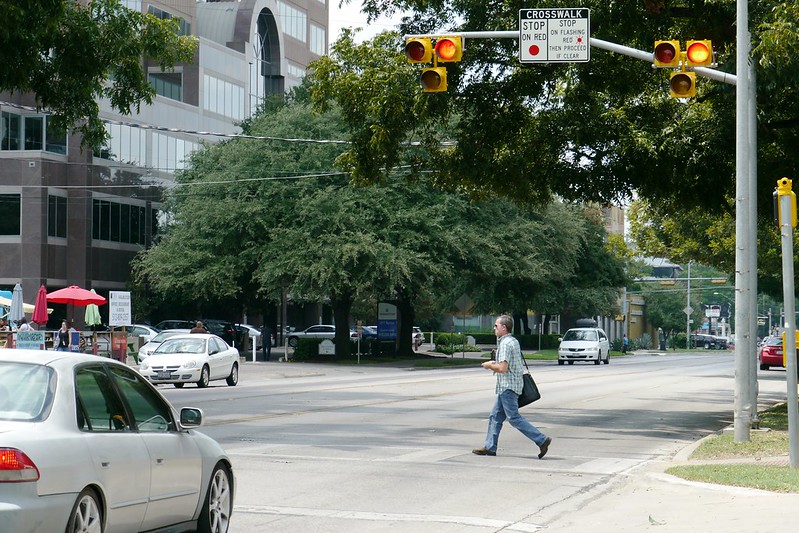
- Other Signal Solutions
-
Countdown timers, Audible Pedestrian Signals (APS) and Leading Pedestrian Intervals (LPI) are among several solutions that support safer and more predictable crossings at signalized intersections.
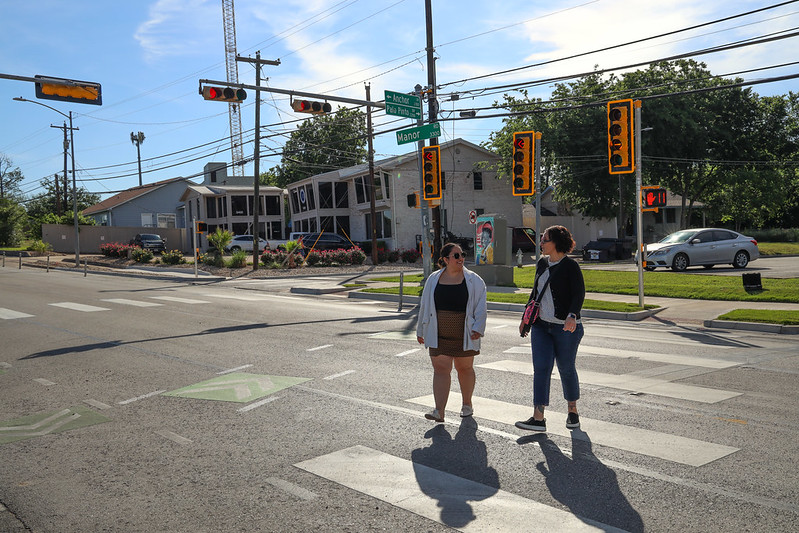
Program Funding
The 2018 Mobility Bond includes $15 million for intersection and pedestrian safety improvements, with $4 million for the Pedestrian Crossing Program.
The 2020 Mobility Bond has $65 million for projects that reduce conflicts and improve safety for all road users through major roadway reconstruction and rapid implementation of low-cost, high-impact projects, with $4.1 million specifically for the Pedestrian Crossing Program.
Reporting an Issue with or Requesting a Pedestrian Crossing
To report pedestrian crossing improvements or pedestrian crossing issues, call Austin 3-1-1 by phone (3-1-1 or 512-974-2000) or visit Austin 311. The City considers 3-1-1 pedestrian crossing requests as part of its prioritization methodology when determining where to place new pedestrian crossings. Pedestrian crossings are evaluated on an ongoing basis against the prioritization map from the Sidewalks, Crossings, and Shared Streets Plan and designed and implemented based on available funding and resources.
For more details on the methodology, please refer to Appendices H and I of the Sidewalks, Crossings, and Shared Streets Plan.
Pedestrian Crossing Program Prioritization Map
Refer to the Sidewalks, Crossings, and Shared Streets Plan for more details on methodology.
Pedestrian Safety and the Law Brochure
Review our Pedestrian Safety and Law brochure, which explains what every driver and pedestrian should know about pedestrian laws to promote a safe environment for people walking in Austin.



